If it is the role of each generation to take their parents’ gifts and reach ever higher, Oliver is doing proud by me tonight by attending his first high school dance.
A combination of social awkwardness and more social awkwardness meant that, in the 5 years I spent in high school in Ontario, I didn’t go to a single dance there.
At the one school dance I did attend, while on a band exchange trip to Fort McMurray, I was thrown into a wall by an angry drunken young man, and this did nothing to win me over to the idea.
Fortunately, Oliver has no such awkwardness, and so is fully prepared to go places his terrified father never could.
This being a more enlightened era, he has the aid of his excellent new support worker, Drake from Summerside, and, should he need it, the support of me, hunkered down here in the Learning Centre as a failsafe. Of course social awkwardness having a half-life of about a billion years, it’s me who’s the nervous one still, cowering in the corner, hoping that nobody notices me.
All of this was made evermore feasible by a helpful meeting on Monday with Oliver’s resource teacher and the school principal where we worked to shave off the rough edges (practical things like “buy tickets from your block D teacher,” something that Oliver doesn’t have, and matters of the spirit like “will Oliver be overwhelmed and what’s our plan if so?”). They were nothing but helpful and supportive in this regard, and are to be commended for their true commitment to inclusion.
I’ve got a big stack of books and three hours to kill. The indecipherable back beat of 2017 pop music leaks through from the cafeteria. Worst case scenario, I can always hide under a desk if it gets too bad.
Postscript the next morning: the dance was great; Oliver had a wonderful time and danced up a storm; Drake was great; I had a relaxing three hours in the Learning Centre, most of which I spent talking my brother Mike on the phone.
The word is all over town that the Hopyard crew are opening a new place in the old Sirenella space on Water Street. And so, in anticipation of the coming freshening, I thought it wise to snap a photo before it’s too late.
Many great meals were had in there.
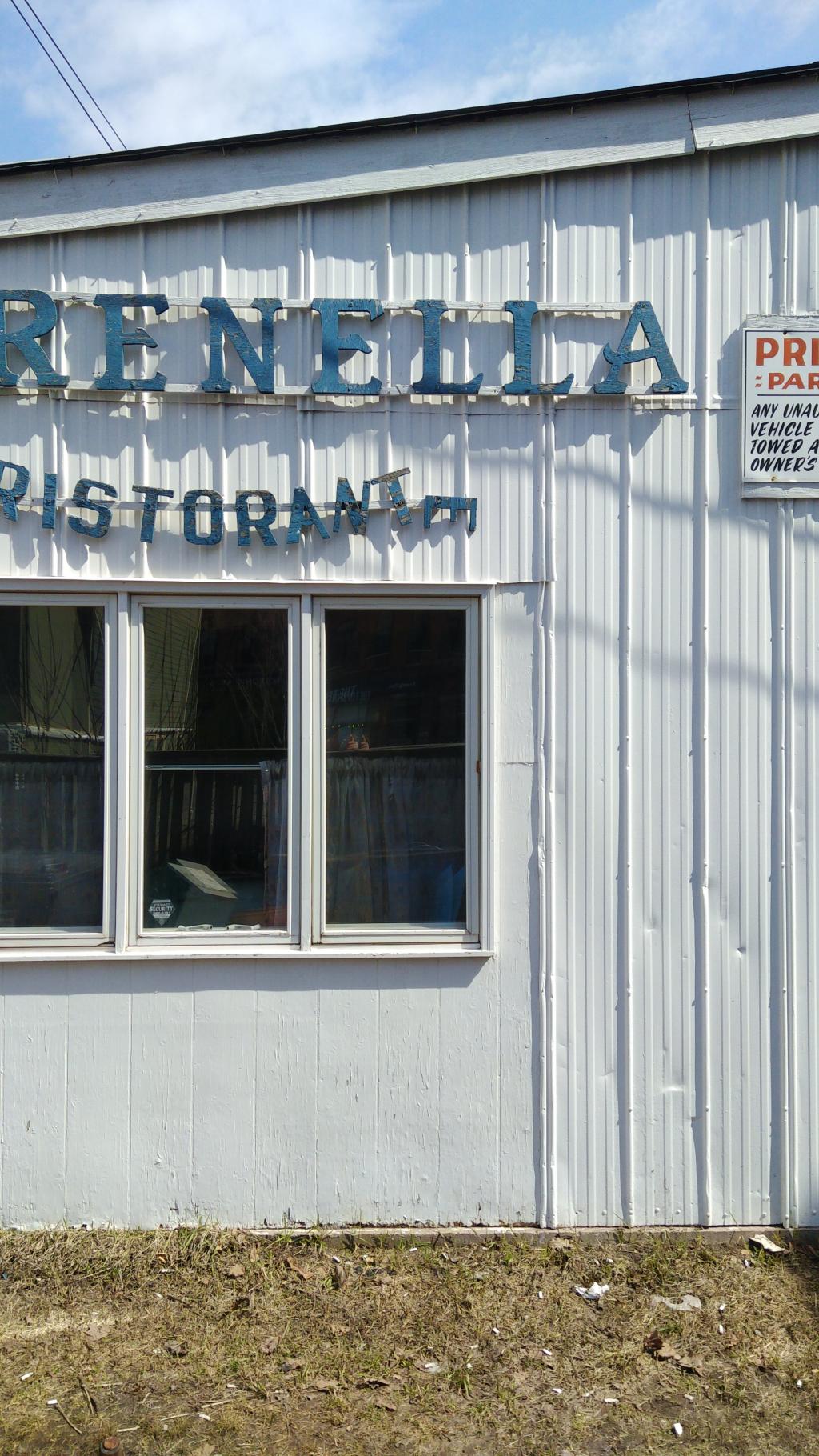
I was in my friend Catherine Hennessey’s house yesterday, helping her find out why her Facebook had mysteriously started communicating to her in Brazilian Portuguese, when I spotted a copy of John Croteau’s book Cradled in the waves: the story of a people’s co-operative achievement in economic betterment on Prince Edward Island, Canada sitting on her dining room table. Curious–I’d heard Catherine and her posse referring to Croteau in venerable terms for years–I picked up the book and paged through it.
Spanning the endpapers I found a beautifully-illustrated map of Prince Edward Island:
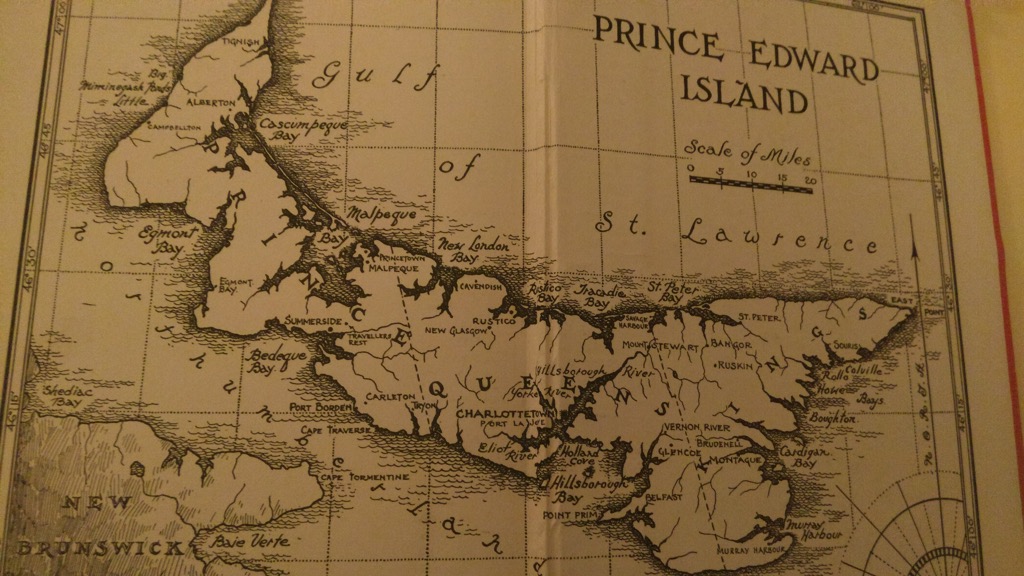
My eye was immediately drawn to northern King’s County where I spotted, just under Bangor, a place named Ruskin, which I’d never heard of before:
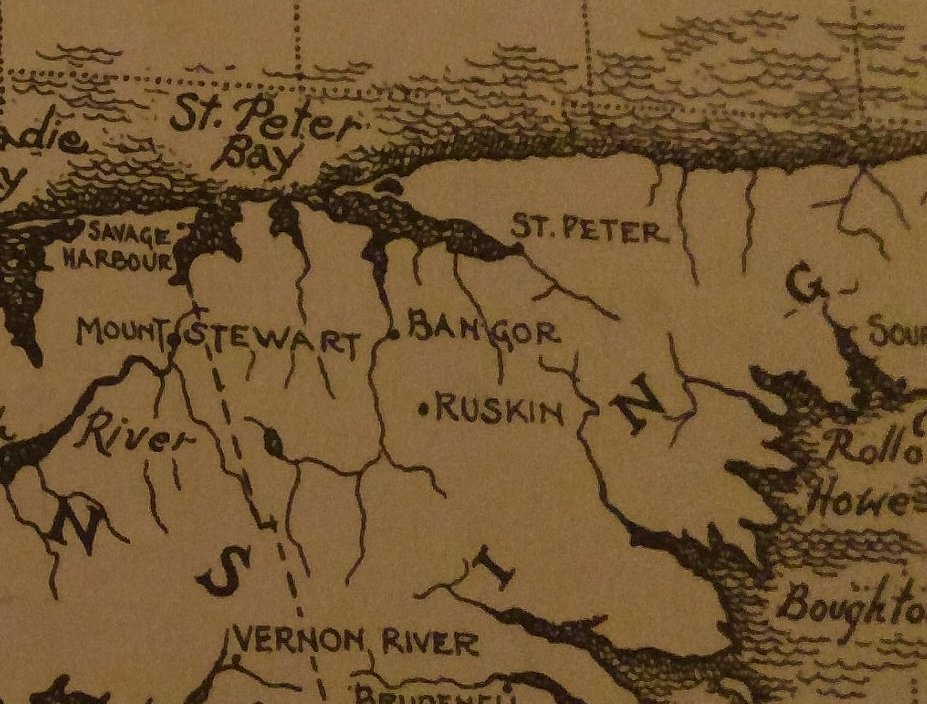
This is one of my favourite areas of Prince Edward Island. My first visit there was many years ago when I needed to go and visit a young cobbler who’d set up home and shop in a house off the Bangor Road. On the journey there–drive to Morell, turn right, drive forever–I was struck by how unpopulated the region was. In a province where you are not often out of sight of the signs of human habitation, you can drive for miles on the Bangor Road and see only forest, fields and scrub before emerging, far down the road, into what, by comparison, seems like decidedly urban Cardigan.
The notion that The Lost City of Ruskin lurked somewhere along that route was intriguing.
So, what of this Ruskin?
The 1973 book Geographical names of Prince Edward Island has an entry on page 107 for the place:
Ruskin: PO 1891-1913 in the N part of Riverton, Lots 39, 40 and 52. Named for John Ruskin (1819-1900) the art critic.
Comparing this 1973 book to the 1925 Place-names of Prince Edward Island with meanings, we find disagreement on the where, but confirmation of the place being named after John Ruskin:
Ruskin; settlement, lot 51. A post office about 1891 to August 15, 1913. After John Ruskin (1819-1900).
While he’s not mentioned by profession here, John Ruskin the art critic was indeed born in 1819 and did indeed die in 1900.
The book Canadian Literary Landmarks, by John Robert Colombo, also references John Ruskin the English essayist:
Ruskin was the name of a post office in Riverton from 1891 to 1913. Riverton is south of Morell. Ruskin was named after the English essayist John Ruskin (1819-1900).
This notion of Ruskin being named after John Ruskin the writer runs contrary to what was reported in Over on the Island, the 1939 book by Helen Jean Champion. As Champion takes the reader on a ramble through King’s County, we come to Ruskin at the end of chapter 7, “A Plague of Mice” (emphasis mine):
Farther on lies Ruskin. I wonder what that great apostle of art would say if he could see his family name representing a district on Prince Edward Island. The place, however, is not named after the famous writer; it is named after John Ruskin, an early settler. Even so, if the great critic ever spied his name on this map, I am sure he would put one thumb in his waistcoat, and assuming the attitude typical of a lecturer, he would begin an address to his dear unknown friends:
Wherever art is practised for its own sake, and the delight of the workmen is in what he does and produces, instead of in what he interprets or exhibits—there art has an influence of the most fatal kind on brain and heart, and it issues, if long so pursued, in the destruction both of intellectual power and moral principle; whereas art devoted humbly and self-forgetfully to the clear statement and record of the facts of the universe, is always helpful and beneficent to mankind, full of comfort, strength, and salvation.
John Ruskin, the critic, retires, and John Ruskin, the farmer, takes his place at the plough and forgets, if, indeed, he ever knew, the principles which this great teacher has laid down. And Ruskin, the district, goes on with its daily work, unconscious of the great and illustrious name it bears.
There is a paucity of Ruskin, PEI scholarship otherwise, likely because what was once a place that people were from is now just a stretch of road.
The Guardian is filled with Ruskin references, but most all of them are references to John Ruskin the Essayist, not our Ruskin, and where they are references to our Ruskin, they are mentioning the school district or the polling place.
So the question remains: was Ruskin, Prince Edward Island named after an English essayist, or an Island farmer?
Anthony Bourdain on friendship, from a recent profile in The New Yorker:
Bourdain is exceptionally close to his crew members, in part because they are steady companions in a life that is otherwise transient. “I change location every two weeks,” he told me. “I’m not a cook, nor am I a journalist. The kind of care and feeding required of friends, I’m frankly incapable of. I’m not there. I’m not going to remember your birthday. I’m not going to be there for the important moments in your life. We are not going to reliably hang out, no matter how I feel about you. For fifteen years, more or less, I’ve been travelling two hundred days a year. I make very good friends a week at a time.”
I haven’t reliably hung out with anyone in more than 25 years.
When I began my term as Hacker in Residence at Robertson Library at the University of Prince Edward Island in 2013, one of the first things I did was to set up a dedicated weblog to record my activities while wearing that hat.
Things started badly when I was forced, by university policy, to attached the blog to http://hacker.vre.upei.ca/, an address nobody could love (to this day I don’t know what a “VRE” really is, nor why it had to appear in my URL).
But I soldiered on, making 60 posts, on all manner of topics, between January 8, 2013 and July 17, 2015.
At that point the Hacker in Residence blog started to wither on the vine; it wasn’t that I wasn’t hacking-in-residence any longer, it’s just that, as I gradually fine-tuned the writing-and-rendering environment here on the mothership blog, writing over there felt like wearing slightly ill-fitting clothes. So I started to write here what I would have once written there.
This was the second time something like this happened: back in July of 2003 I started a separate Reinvented Labs blog to write about more technical topics. That too fell into disrepair, a year later in 2004, and I corrected the error of my ways by returning to a single stream of writing when I evolved what was once the “Reinvented.net” blog into the “ruk.ca” blog as you now know it.
What I should have learned from that exercise, and what I’ve finally realized definitively, is that I should never split my feed.
Which is to say: it’s difficult enough having one clean, well-lit place to write, let alone introducing the technical and spiritual complexities of creating separate neighbourhoods for separate types of writing. Drupal installations don’t get updated. Backups don’t get made. Attention doesn’t get paid. It looks like the interest stopped, when really it just flowed elsewhere.
So today I imported all 60 of the Hacker in Residence posts over here, and this week I’ll get a redirect put in place to 301 Redirect all http://hacker.vre.upei.ca/ URLs over to https://ruk.ca/ ones.
Please warn me if I set out to do this again.
From a technical perspective, I used the Views Data Export module on the Hacker in Residence Drupal to export the posts into a CSV file. On this end I used the Feeds module, supplemented by Feeds Tamper to massage the data a little, to import the posts into this Drupal. Where they will remain for all eternity.
I ordered some NFC stickers last week from Tagstand, because I want to explore the possibilities of tagging physical objects with digital information; think of it as the digital equivalent of the Sharpie-labelling I wrote about earlier.
The tags were only 92 cents each, making them perhaps the cheapest computers–if you consider them computers–that I’ve ever purchased.
Each tag can hold 496 bytes of NDEF, which is to say that I can stuff 496 characters of, well, anything, onto the tag, and that anything will be read back whenever an NFC-reading device taps onto it.
My Android phone, a Nextbit Robin, will both read and write NFC tags, so to “program” the tags, I installed NFC Writer by Trigger from Google Play.
Writing tags is easy: you just select the type of message–Web Address for example–and the associated message–https://ruk.ca/ was what I used–and tag the phone on the tag. I made a little video to illustrate this:
Back at the dawn of Receiver Coffee, when Sean was still working the coffee machine, he developed The Sean for me, a refreshing coffee-over-ice beverage.
Then Sean moved into upper management, and The Sean was only available on those rare occasions he emerged from the basement or the roastery.
Fortunately, young Tristan Gray stepped into the void and came up with The Tristan, his own take on the genre. Over the last year he’s refined it to the point of excellence.
Alas now, after today, The Tristan too will be retired into the Receiver Hall of Fame, as Tristan moves out from behind the counter and into a new job at DME.
Tristan, and The Tristan, will be missed: I came in this afternoon for one last; I’m happy to say that it reached its zenith, a perfect blend of ice, milk and coffee.
Addio mio ottimo barista.
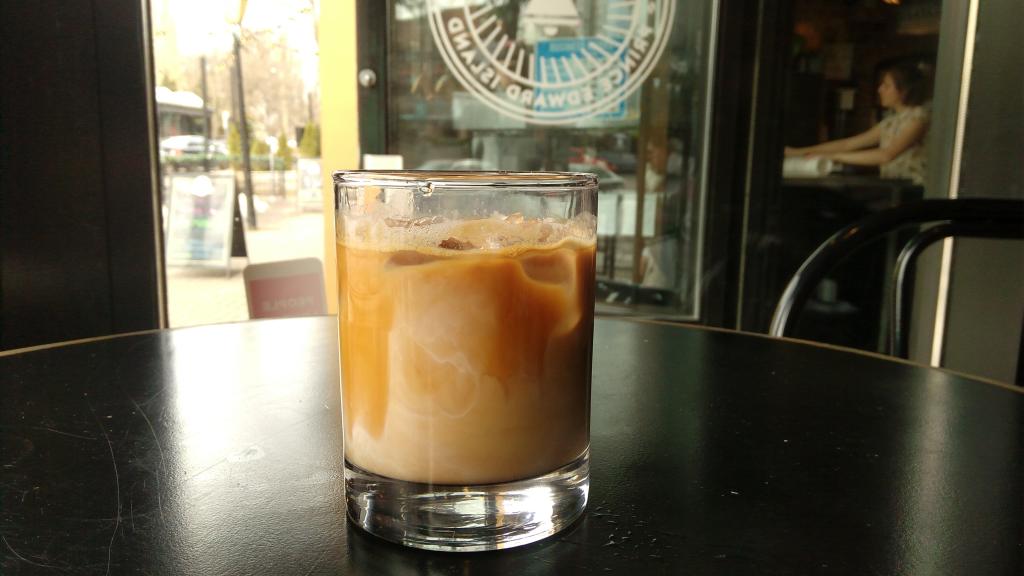
A bizarre twilight tonight in Charlottetown: warmer than it’s been in months, light rain, banks of fog rolling around, and a very, very high tide.
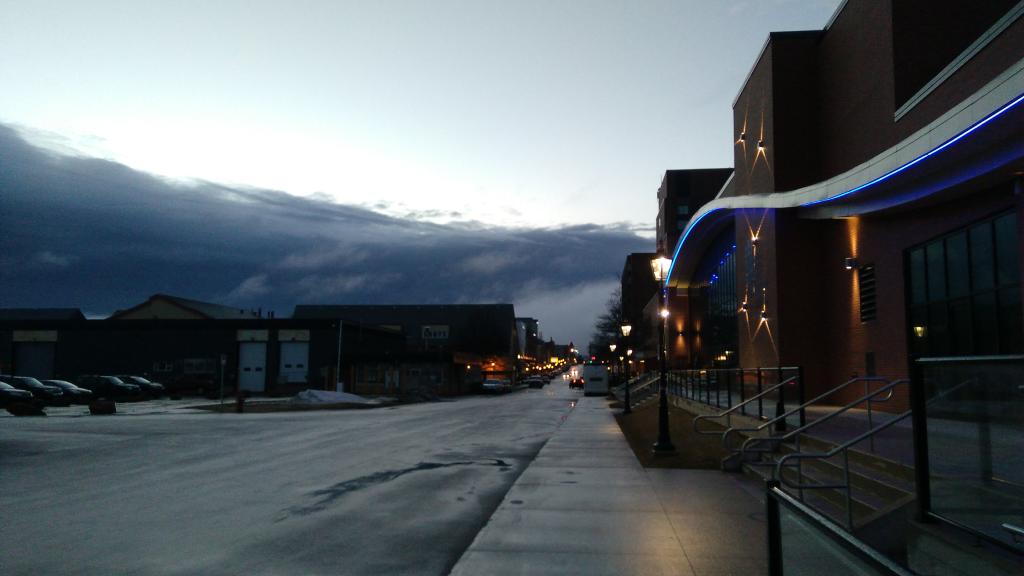
The latest exercise I’ve tackled in the How to Draw Without Talent online course I’m working through is my favourite so far. It’s called “Squares” and the remit is as follows:
With this exercise, we’re just going to go around our homes, drawing the equivalent of little Instagram snapshots of different corners. If you have a frame, just hold it up until you find some random composition and copy it down into a square on your page. It doesn’t matter if objects are cut off or hard to identify. In fact, the more abstracted the slice of life you depict, the easier it may prove to draw.
The most useful piece of advice for this exercise, well-communicated in the accompanying video, is “Each individual drawing may not shine by itself, but when it’s placed alongside another, equally imperfect pal, they all work together.” And it turns out to be true. I’ve filled up three pages so far of “little Instagram snapshots of different corners,” and they variously work and don’t work:
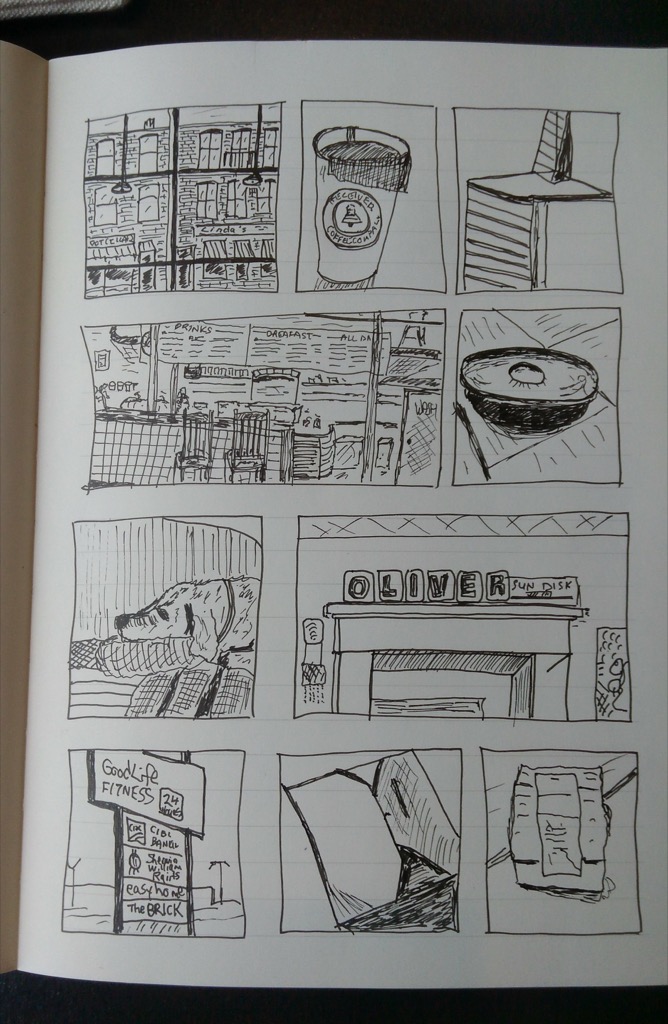
I’m rather proud of the top-right drawing, a scene looking out the front windows of Mad Wok at the building across the street. The one in the top-left, though, is an attempt to draw my type case which failed completely because I got all the angles wrong (if there’s a challenge I face with drawing it’s an inability to translate angles from eye to paper; what I’ve learned is that it’s possible to learn this, but it’s hard learning to retrain old eyes!).
The number one of lesson of this lesson is that drawing is something you only get better at through practice and practice and practice. Which, of course, is true of most anything. So you will see me these days, more often than not, carefully sketching away in the coffee shop where I would have once been browsing my RSS feeds or updating Twitter.

 I am
I am